Further references:
Partner websites:
wines with predicate
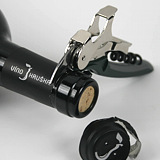 Wines with predicate are made from grapes that remain on the vine longer than those for quality wines and are picked in late autumn. These top-class wines are made from fully ripened grapes and their varieties have characteristic properties, as well as a higher content of alcohol and residual sugar.
Wines with predicate are made from grapes that remain on the vine longer than those for quality wines and are picked in late autumn. These top-class wines are made from fully ripened grapes and their varieties have characteristic properties, as well as a higher content of alcohol and residual sugar.
Wines are divided into several categories according to their sugar content: cabinet, late harvest, selected late harvest, etc. These wines are truly superior, as the overripe grapes contain concentrated aromatic and flavour substances, sugar and noble rot typically creating a pleasant piquant taste.
quality wines with must density up to 19°ČNM
cabinet wines, must density over 19°ČNM
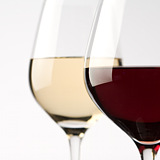 late harvest wines, must density over 21°ČNM
late harvest wines, must density over 21°ČNM
selected harvest wines, must density over 24°ČNM
selected berries harvest wines, must density over 27°ČNM
straw and ice wines, must density over 27°ČNM
Good food deserves carefully selected quality wine. Wine should either supplement food creating a harmonious whole, or contrast with it.
how to open a bottle - valve function
A valve guarantees an intact bottle. In addition, it slows down the circulation of gases between the bottle and ambience. Valves chiefly have a decorative function, the majority of them are made of plastic or foil.
how to extract a cork
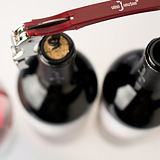 When handling a corkscrew, the effect of traction force is always crucial. The cork should slip out gently and slowly, without being forced out.
When handling a corkscrew, the effect of traction force is always crucial. The cork should slip out gently and slowly, without being forced out.
Gentleness is essential; shock from pulling the cork hard can harm the wine. Rapid rebalancing of pressure between the bottle contents and ambience and the sudden inflow of oxygen put stress upon good wines.
cork test
Before you start pouring, the cork should be tested - sniff it.
Bad corks give off the smell of a mouldy cellar, and the wine in the bottle is usually infected, too.
wine test
The person opening the bottle first pours himself or herself a small amount of wine in order to taste it.
how to pour wine
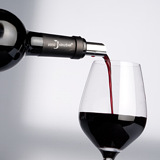 Wine is poured into a glass slowly and carefully, not in a fast flow. With noble wines, the person pouring can hold the glass, tipping its upper part towards the bottle and filling it. As a rule, glasses are on the table and wine is poured from above. Coram publico, i.e. the opening of a bottle of wine at the table, with guests watching, has a long tradition.
Wine is poured into a glass slowly and carefully, not in a fast flow. With noble wines, the person pouring can hold the glass, tipping its upper part towards the bottle and filling it. As a rule, glasses are on the table and wine is poured from above. Coram publico, i.e. the opening of a bottle of wine at the table, with guests watching, has a long tradition.
pouring wine
When a host sees that the wine is good, he or she may serve it to the guests. The host is the last to fill his or her glass.
white wines 8 - 14°C
rosé wines 8 - 10°C
red wines 14 - 18°C
how much wine to pour in a glass
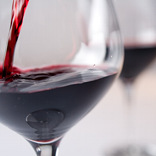 A general rule is that small glasses are filled to a third, tall ones to a quarter and the rest of the wine remains in the bottle. The wine can thus develop its bouquet and tastes better.
A general rule is that small glasses are filled to a third, tall ones to a quarter and the rest of the wine remains in the bottle. The wine can thus develop its bouquet and tastes better.
how to hold the glass
Always hold the glass by the stem, not by the cup.